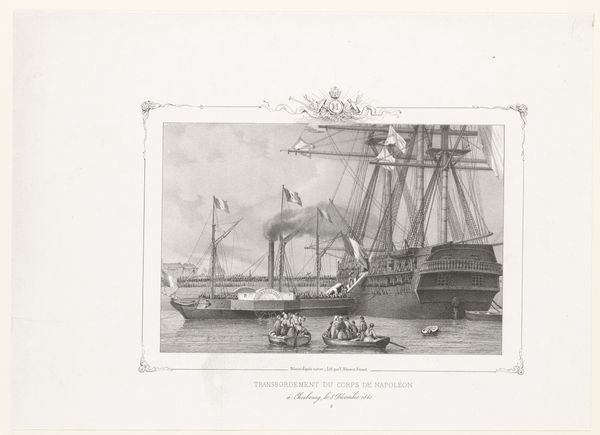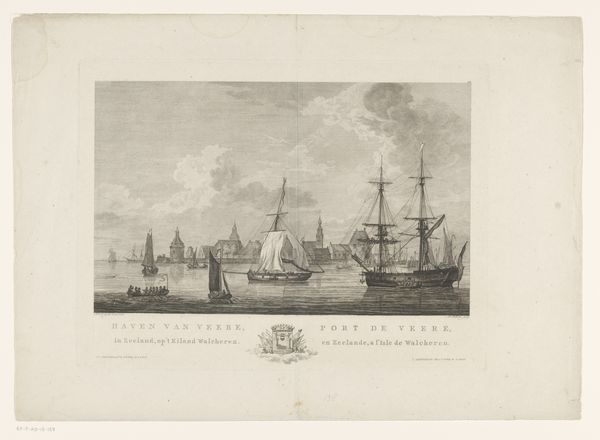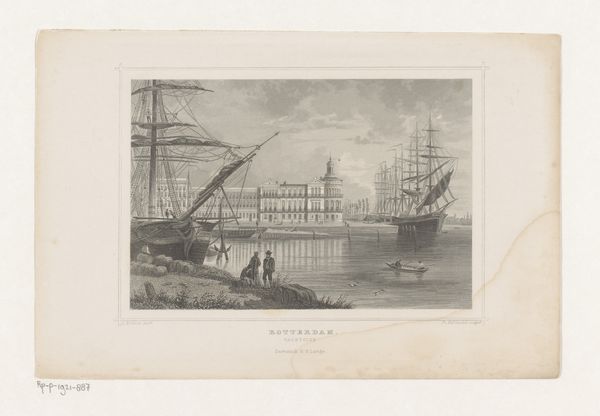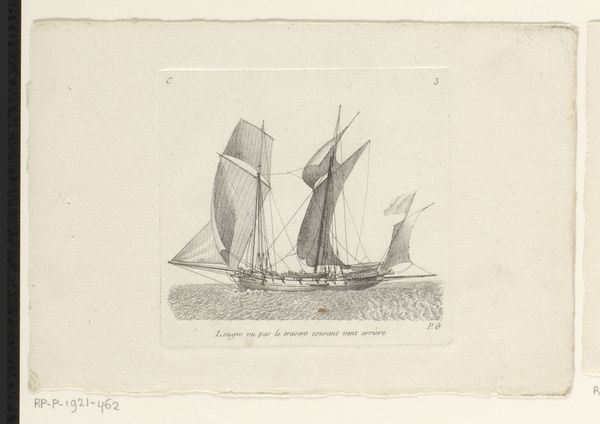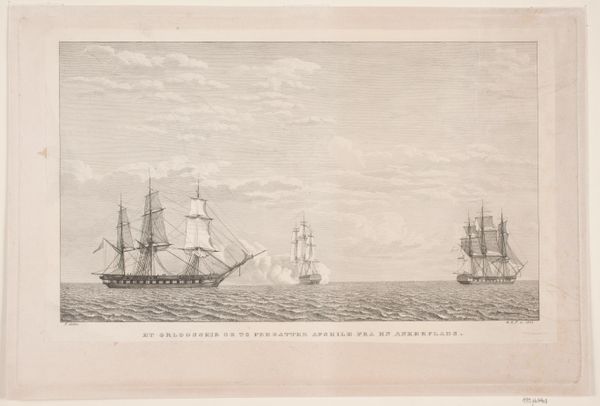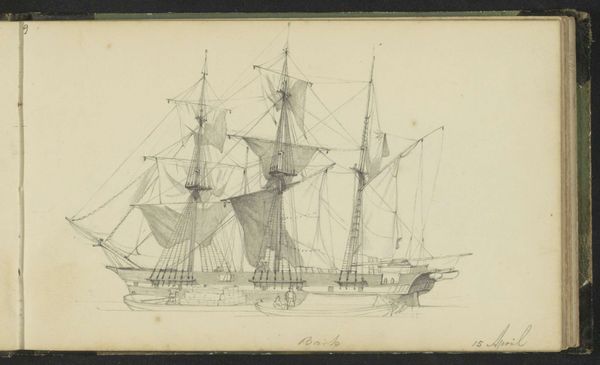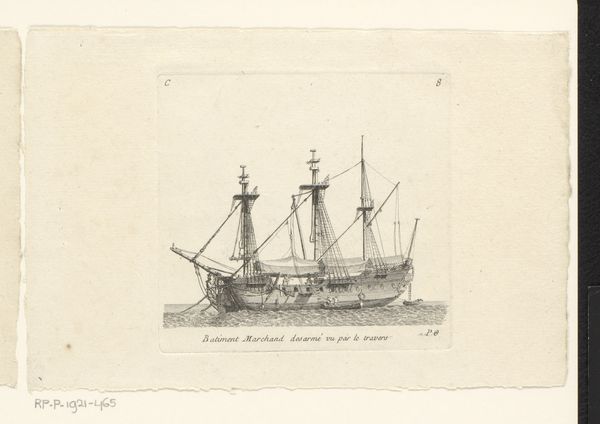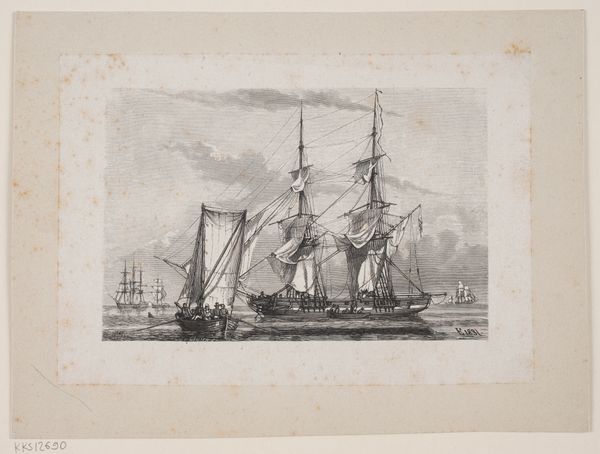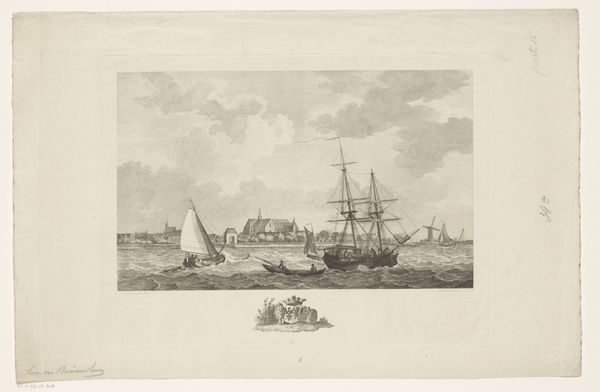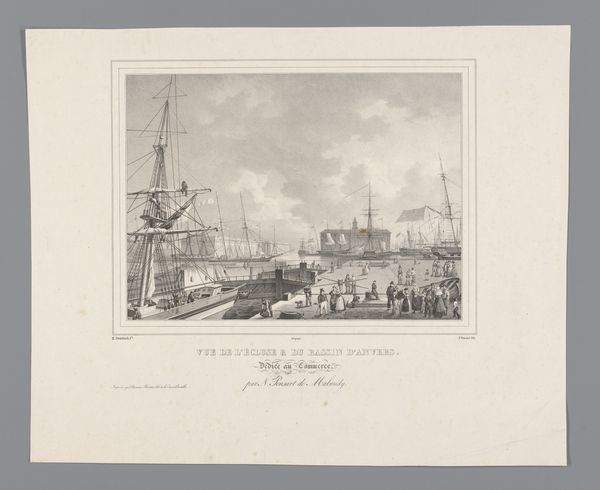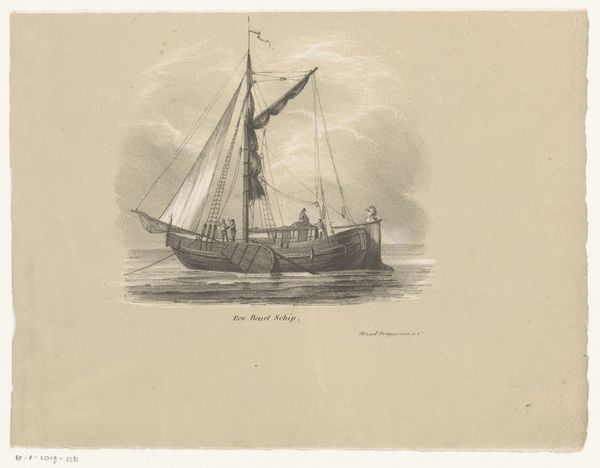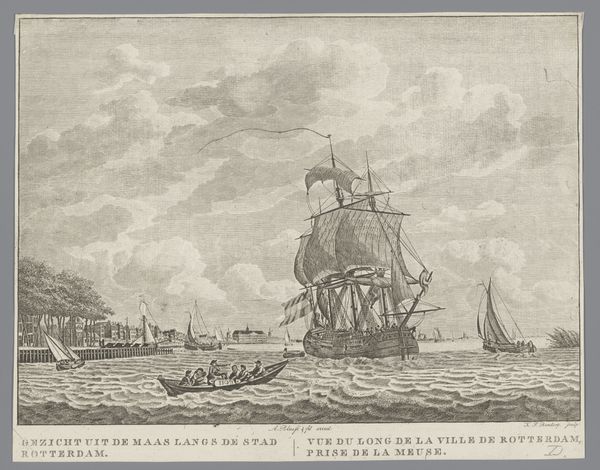
Dimensions: height 116 mm, width 152 mm
Copyright: Rijks Museum: Open Domain
Curator: This print, titled "Gezicht op Blackwall railway station, in Londen," offers us a view of the Blackwall Railway Station in London sometime between 1841 and 1885, created by an anonymous artist. What are your first thoughts on this piece? Editor: It’s striking. The overwhelming detail combined with the pale grays evokes a sense of industrious melancholy. It's a really compelling atmosphere for what is essentially a transport hub. Curator: Absolutely. And that mood reflects a pivotal moment. Think about the socio-economic landscape of Victorian London— the burgeoning railway system, a symbol of progress, quite literally meeting the maritime world. What stories do these visual elements suggest about the movement of people and goods, especially in a colonial context? Editor: The ships and the railway together paint a clear picture of global trade, extraction of resources, and the brutal realities of empire. You can see how this kind of infrastructure facilitates the concentration of capital and power. This connects directly with the exploitation of both laborers and the environment on a global scale. The lack of individuals in the artwork, in the sea and on land, creates an alienating sense. It forces the viewers to acknowledge its emptiness and isolation; It is thought-provoking, to say the least. Curator: That resonates powerfully. Blackwall, being a crucial link in that chain, shows how infrastructures and technology aren't neutral; they're deeply enmeshed with power structures and the flow of capital. And the Romanticism in the landscape adds an idealized sheen to what was essentially a cog in the machine of imperialism. Editor: Indeed. Considering who controlled the railway and shipping industries and who benefited most certainly changes how one interprets this piece. Seeing it from the perspectives of those marginalized by these structures, or those who suffered as a consequence of it, forces the viewers to look at a different side of progress and industry and technological advancement. Curator: A necessary lens for interpreting its complex layers. Thanks, that has offered so many different perspectives of a single image. Editor: It has indeed.
Comments
No comments
Be the first to comment and join the conversation on the ultimate creative platform.
